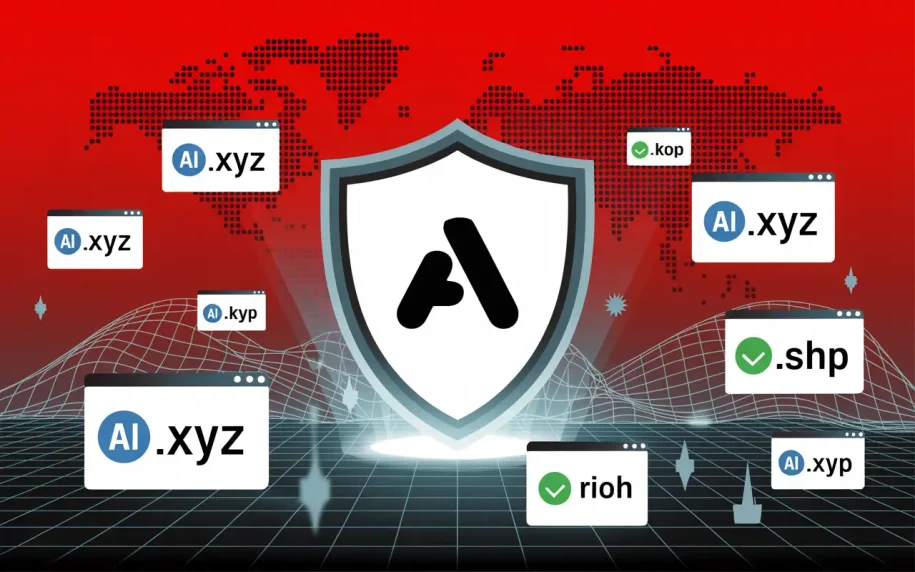Cybersquatting—abusive registration of domain names similar to existing trademarks—has become a common threat. Seemingly minor, it can be costly: loss of traffic, reputational damage, identity theft, or even customer diversion.
For legal directors and brand managers, the question is no longer “Am I at risk?” but rather: “When and how will it happen?”
The answer lies in one word: anticipation. And that requires proactive monitoring, structured and integrated into overall trademark management.
Sommaire
- 1 Understanding cybersquatting: a growing phenomenon
- 2 Why simple searches are not enough
- 3 Proactive monitoring as a shield
- 4 The value of integrated brand + domain management
- 5 Cybersquatting and defense procedures
- 6 Anticipating the future: AI and new threats
- 7 Conclusion
- 8 FAQ – Cybersquatting and Trademark Management
Understanding cybersquatting: a growing phenomenon
Different practices:
- Typosquatting: variations with deliberate misspellings (e.g., gooogle.com).
- Multiple extensions: registering a brand with new TLDs (.xyz, .top, .shop, etc.).
- Domain grabbing: mass purchasing of similar domains to resell later.
- Phishing: fraudulent use to mimic an official site and mislead users.
A democratized threat:
The problem is intensifying. In 2023, WIPO recorded 6,192 complaints under UDRP and its national variants—a record, and nearly 7% more than in 2022.
Meanwhile, the total number of domain names now exceeds 359 million across all TLDs.
With more than 1,000 active gTLDs today, it’s unrealistic to believe you can protect yourself by registering all possible extensions.
Why simple searches are not enough
Many companies still rely on occasional registry checks or registering a few key domains (.com, .fr, .eu). But:
- Fraudsters use bots to register dozens of domains in minutes.
- New extensions constantly appear.
- Some attacks combine domains, emails, and social networks.
Without continuous monitoring, it is impossible to keep track effectively.
Proactive monitoring as a shield
Real-time detection:
Centralized monitoring systems can quickly identify:
- New registrations close to a brand.
- Active domains already hosting fraudulent sites.
- Suspicious redirects.
Rapid response:
The earlier the detection, the more effective the response:
- Contacting the registrar to block or recover the domain.
- UDRP proceedings, fast (average 60 days).
- Local procedures with national registries (e.g., AFNIC for .fr).
The value of integrated brand + domain management
Cybersquatting is not isolated. It must be tied to overall trademark portfolio management:
- Link trademarks and domains: each brand should be connected to its domains.
- Consolidated view: a single dashboard simplifies monitoring and ensures consistency.
- Time savings: no more juggling spreadsheets, registries, and emails.
- Strategic argument: demonstrate to management that brand protection goes beyond the registry and directly impacts digital reputation.
This is where specialized solutions like IPzen prove useful: by offering a global, centralized vision. The real advantage is not the tool itself, but the integrated approach that transforms reactive management into preventive strategy.
Cybersquatting and defense procedures
When a disputed domain is detected, several options exist:
- Amicable negotiation, quick but uncertain.
- Local judicial action, often long and costly.
- UDRP procedure, applicable to most gTLDs.
- Specific national procedures for certain extensions.
Prevention is cheaper than cure. Proactive monitoring reduces the need for litigation.
Anticipating the future: AI and new threats
Cybersquatting evolves with technology:
- AI-driven automation generates thousands of domain variants.
- Sector-specific extensions (.law, .shop, .health) increase the credibility of fake sites.
- Hybrid attacks combining domains + social networks.
More than ever, defense requires continuous, integrated monitoring.
Conclusion
Cybersquatting is no longer a secondary threat—it is a daily reality that directly impacts brand reputation and economic value.
The key lies in proactive, integrated monitoring that connects trademark management with domain surveillance. This approach enables legal teams to move from a defensive posture to a strategic, preventive one.
The question is no longer “Should I monitor my domains?” but “How do I build a sustainable, reliable, and integrated strategy?”
FAQ – Cybersquatting and Trademark Management
- Does cybersquatting only affect major international brands?
No. Even a local SME can be targeted by bots automatically registering similar domains. - What’s the difference between cybersquatting and typosquatting?
Cybersquatting targets domains similar to a trademark. Typosquatting relies on deliberate spelling errors to mislead users. - How can fraudulent domains be detected?
Only continuous monitoring can quickly identify suspicious registrations. A one-time search is insufficient. - What options are available for a victim company?
Negotiation, local judicial action, UDRP proceedings, or national registry complaints (e.g., AFNIC for .fr). - Does software like IPzen eliminate all risks?
No tool completely erases the threat. But integrated trademark + domain management significantly reduces risks by enabling early detection and rapid response.


